Apropos Architects designs the Czech Pavilion at EXPO 2025 Osaka
The Czech Pavilion at EXPO 2025 Osaka, designed by Apropos Architects, is structured around the concept of a continuous spatial spiral. The pavilion is composed primarily of wood and glass and includes a 260-meter visitor path that gradually ascends through four levels, ending at an observation deck 12 meters above ground level. The form references traditional Czech architectural elements and responds to the Expo’s theme of ‘life energy’ through its physical and conceptual emphasis on movement and transformation.
The translucent glass facade functions both as an enclosure and a light-modulating surface. Made of artistic glass plates, it draws on the Czech tradition of glassmaking while facilitating varied lighting conditions throughout the day. These changes affect the interior experience and contribute to the atmosphere of the exhibition spaces. At the building’s core lies a multifunctional cylindrical auditorium, a black box space structurally and programmatically entwined with the surrounding gallery. Within, large-scale works by Czech creatives, including Rony Plesl, Jakub Matuška (Masker), Lasvit, and Lunchmeat Studio, construct a layered visual narrative in dialogue with the pavilion’s spatial choreography.
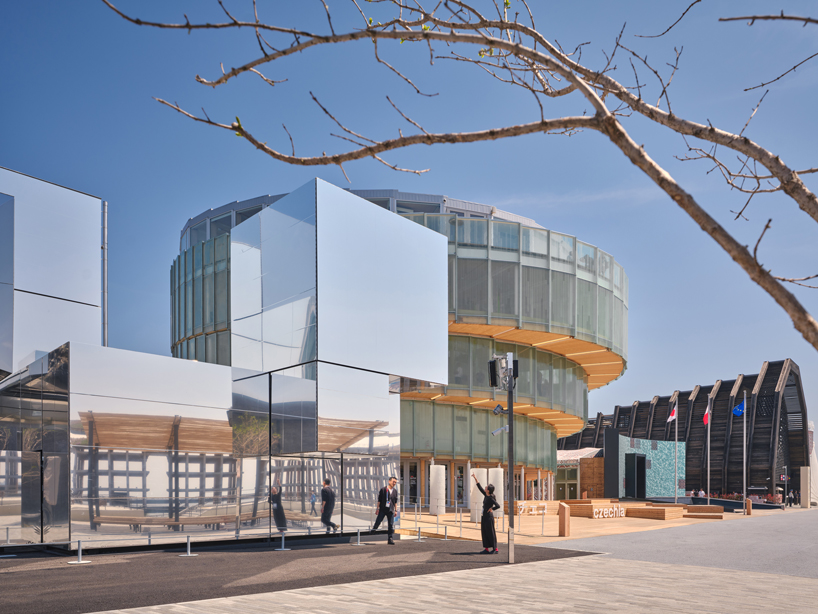
all images by BoysPlayNice
Cross-laminated timber and glass plates shape the exterior
For the structural system, Apropos Architects’ design team uses cross-laminated timber (CLT) panels made from spruce. These panels form the primary load-bearing framework, including the embedded staircases and elevator shaft. Horizontal slabs connect and support both the outward-facing exhibition spiral and inward-facing balconies of the auditorium. The full structure reaches a height of 16 meters and is segmented into 36 parts. The lower levels form a circle, gradually transitioning into an elliptical footprint at higher elevations. The interior finishes emphasize exposed wood elements and restrained material palettes. A skylight at the roof level provides views of the auditorium from above, while large-scale glass openings allow for outward views of the surrounding sea and cityscape. Accessibility is ensured via a lift located on the western side of the structure. The architectural design facilitates physical circulation, passive environmental modulation, and integration of exhibition content, aligning with the Expo’s broader thematic focus.
The pavilion’s external space is finished with wooden decking and integrated seating areas. These outdoor elements accommodate resting and gathering for both visitors and passersby. Inside the pavilion, the gallery features a sequence of large-scale artistic installations. These include a crystal sculpture by Rony Plesl, a continuous wall painting by Jakub Matuška (Masker), and a multimedia installation by Lunchmeat Studio. Additional works include a bronze sculpture by Alfons Mucha and a glass piece titled ‘Herbarium’ by Lasvit.
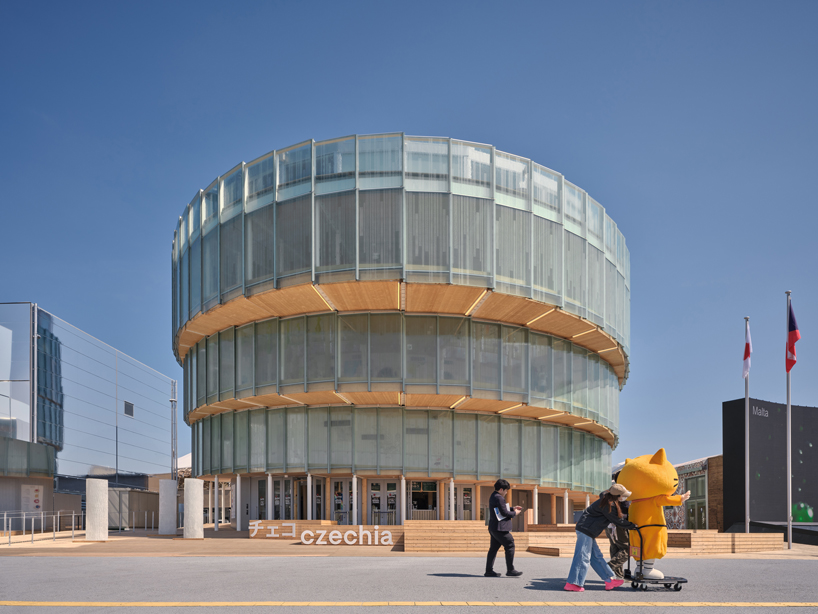
spiral path wraps around the pavilion, guiding visitors through four levels
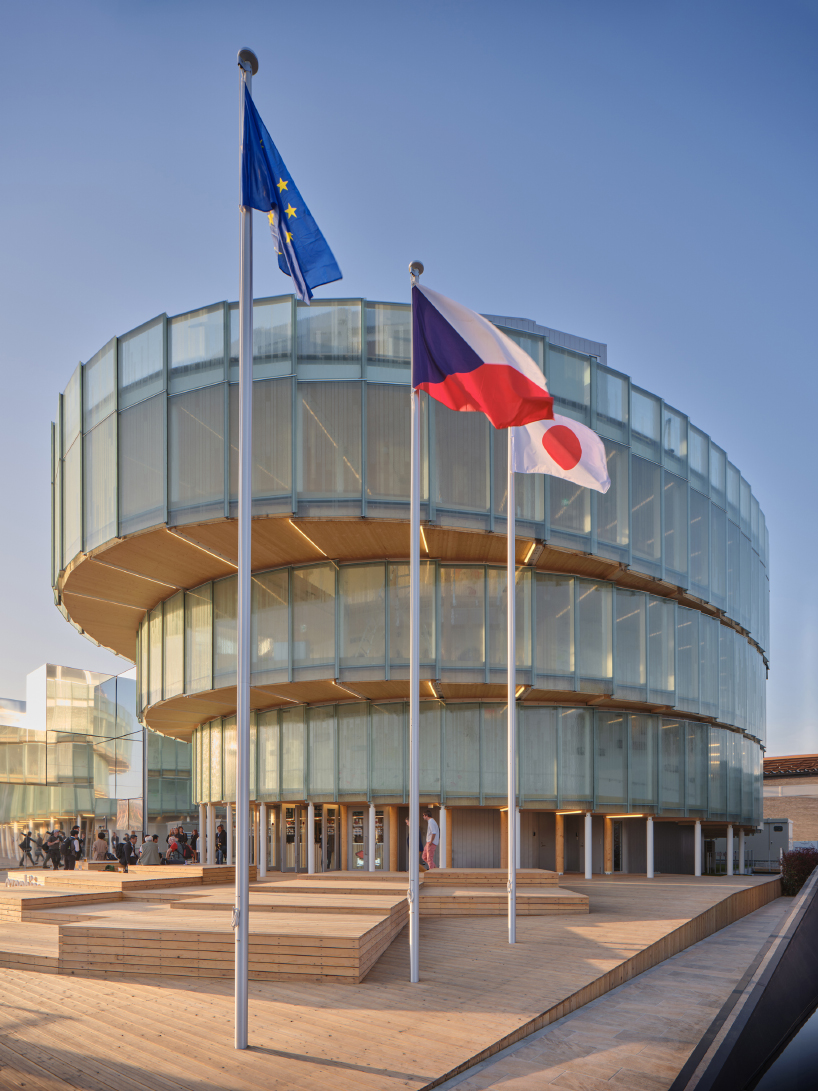
pavilion structure composed of cross-laminated timber and glass
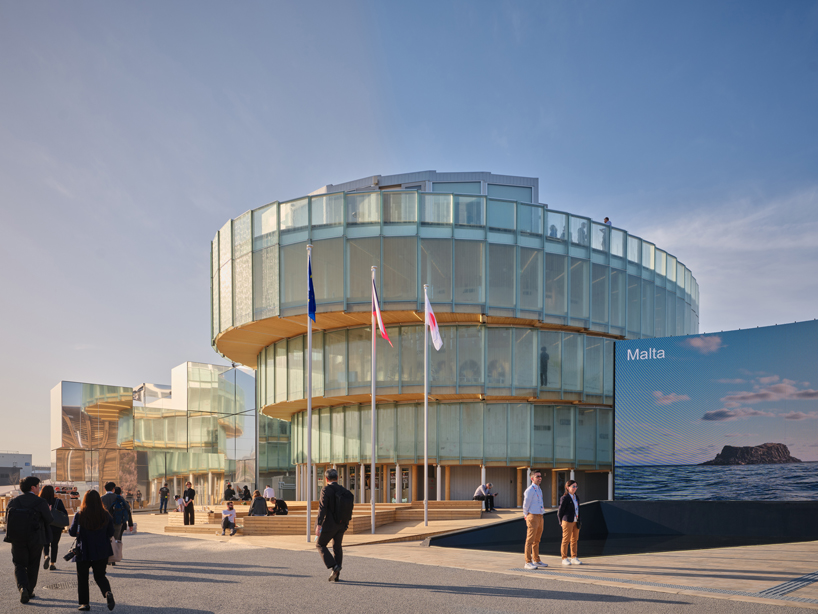
spiral design reflects the pavilion’s central concept of continuous motion
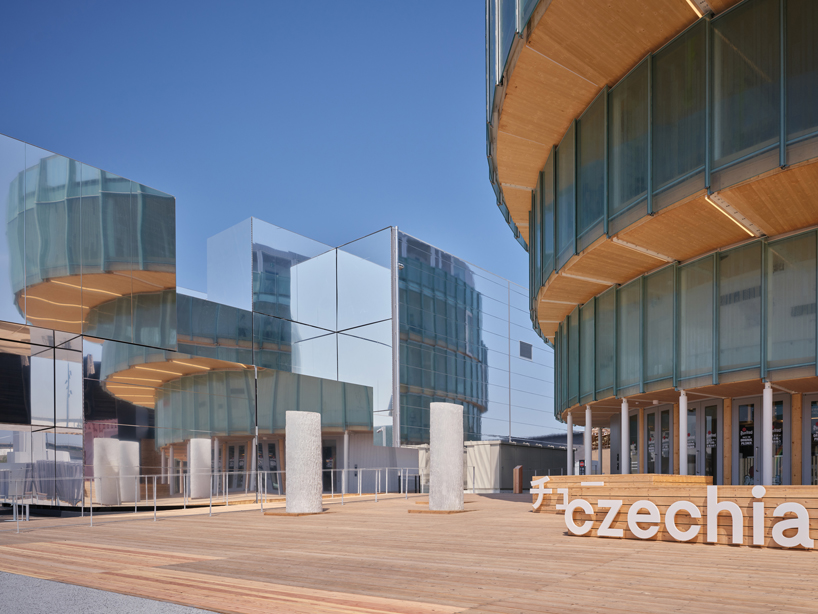
large artistic glass plates form a translucent facade

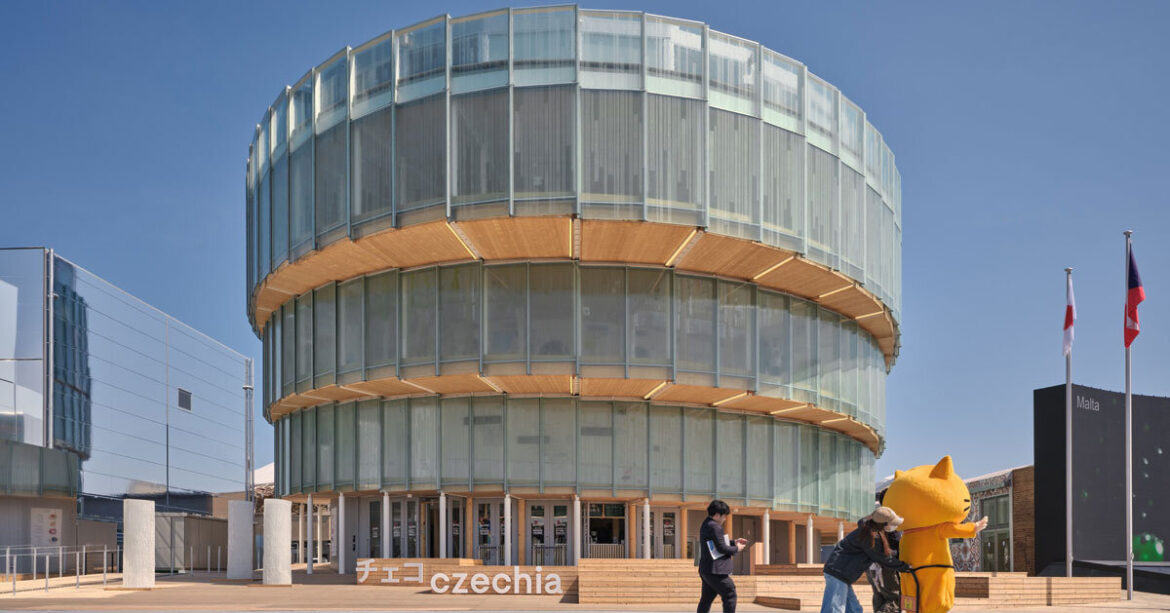
AloJapan.com